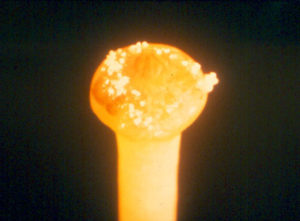
Pollen grains on a female stigma of a blueberry flower.
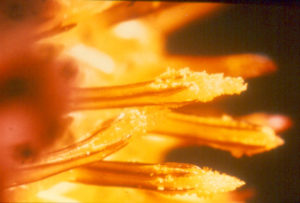
Flower anthers that produce pollen grains.
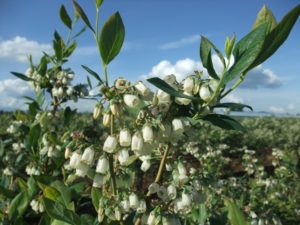
Hig-bush blueberry
Pollen grains
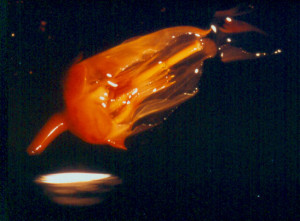
A blueberry flower cleared to show the whole flower.
Blue berries, small and large are produced after bees deliver pollen from one flower and leave it at another. The occasional grain may be transferred by a fly or by brushing against a plant, but he most effective pollination is done by bees.
It is a waiting game for the each blueberry flower. Each flower is attractive in its own right to a bee. since each flower produces nectar. The bee needs nectar as an energy source and at the same time the bee collects and delivers pollen.
Pollination is the transfer of pollen from one flower to another. The bee does this very effectively.
Bees have branched hairs that carry pollen grains. Pollen is collected from the male part of the flower called the anther. When the pollen laden bee arrives at a blueberry flower and the bee scrabbles around for pollen and or nectar, some of the pollen on the bees body lands on the sticky stigma or female part of the flower.
After pollen grains land on the sticky surface of the stigma, each pollen grain will produce a pollen tube down the stem

Blueberry pollen grains.
of the stigma (style) into the ovule. Fertilization of the ovule soon follows and this ovule develops into a seed. Growth and enlargement of the fruit is a response to seed development.
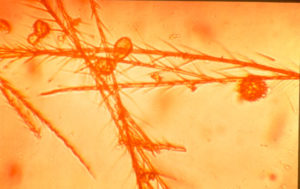
Pollen grains on a bees’ branched hair
The more pollen on a stigma, the more seeds are produced and the larger is the fruit.
